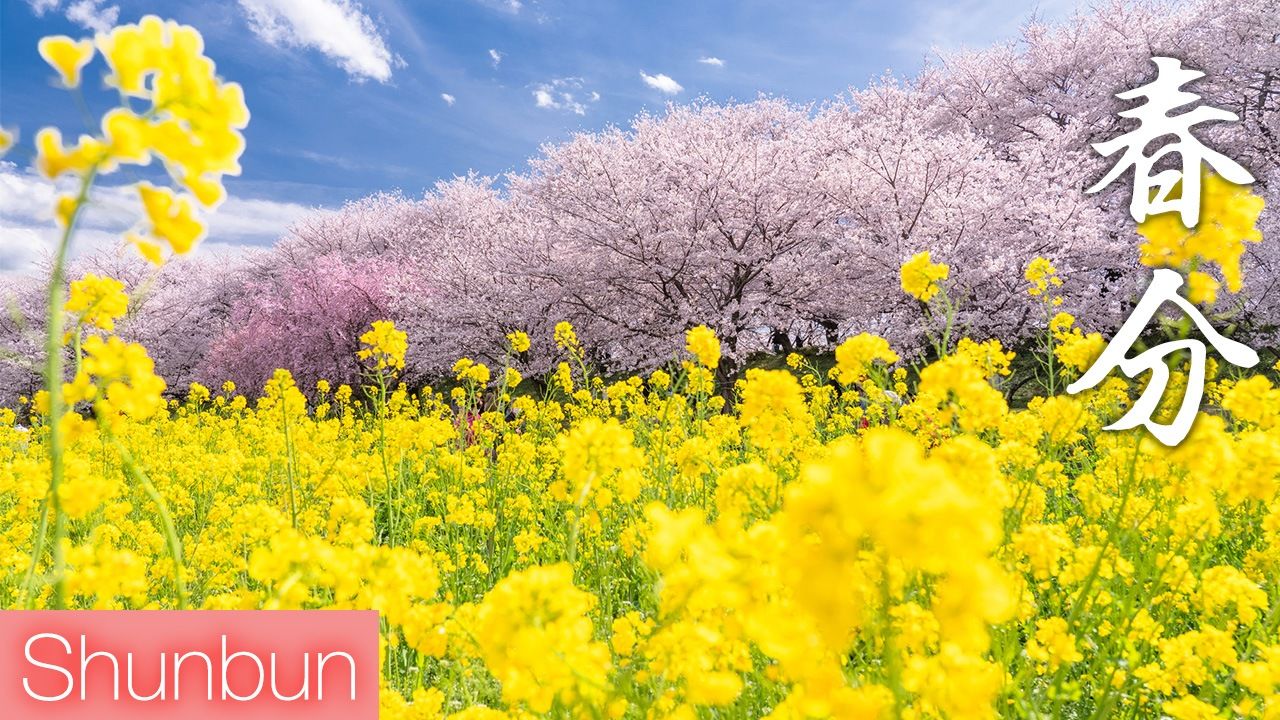
Shunbun (Spring Equinox)
Culture Lifestyle History- English
- 日本語
- 简体字
- 繁體字
- Français
- Español
- العربية
- Русский
Shunbun, the spring equinox, is a major juncture among Japan’s 24 solar terms. It falls around March 21 on the modern calendar, and is a national holiday. The sun rises due east and sets due west, and day and night are the same length. March 21, known as Nowruz, is also celebrated at the start of the new year in the Iranian calendar.
This article will look at events and natural phenomena in the period roughly from March 21 to April 4.
Higan
Higan, marked in the periods around the spring and autumn equinoxes, is a Buddhist holiday when people pay respects to their ancestors. In Buddhist belief, the Buddha and bodhisattvas reside in the Western Pure Land, which is the world of enlightenment or “distant shore” (a literal translation of the Japanese higan). In Japan, it is believed that the Pure Land is closest at the equinoxes, as the sun sets due west. Higan memorial services for the dead date back to the Heian period (794–1185), and are only performed in Japan.
The Higan weeks start three days before each equinox and continue for the three days after. Shintō ceremonies are also held for the start of the farming year, and it is said that the end of Higan brings warmer spring or cooler autumn temperatures.
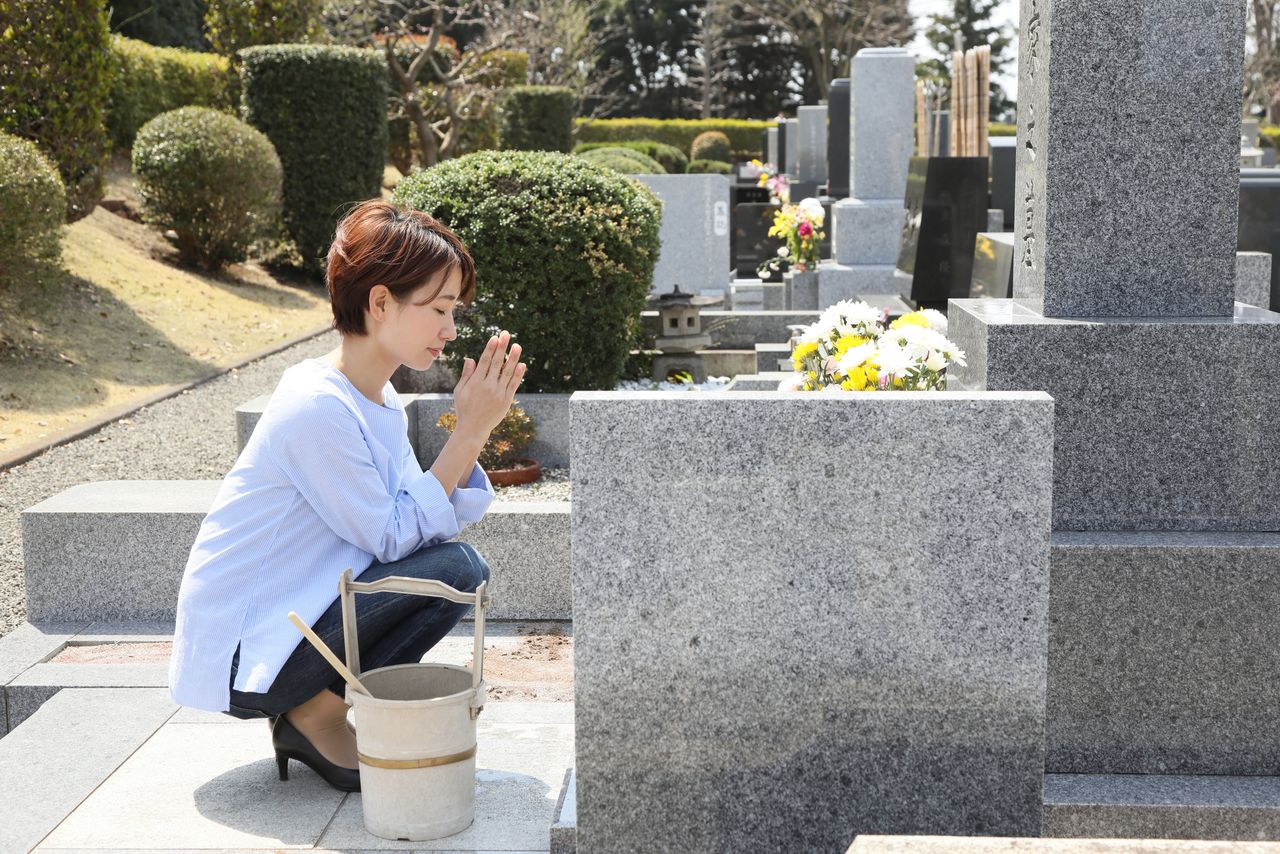
During Higan, many people visit their ancestors’ graves to pay their respects. (© Pixta)
Botamochi rice cakes coated with sweet azuki bean paste are a traditional spring equinox treat, representing the botan (peonies) that are in season. The rice cakes are also used as offerings at ancestors’ graves and butsudan (household Buddhist altars) to pray for a good crop. In autumn, the same rice cakes are called ohagi after the hagi or bush clover that flowers in autumn.
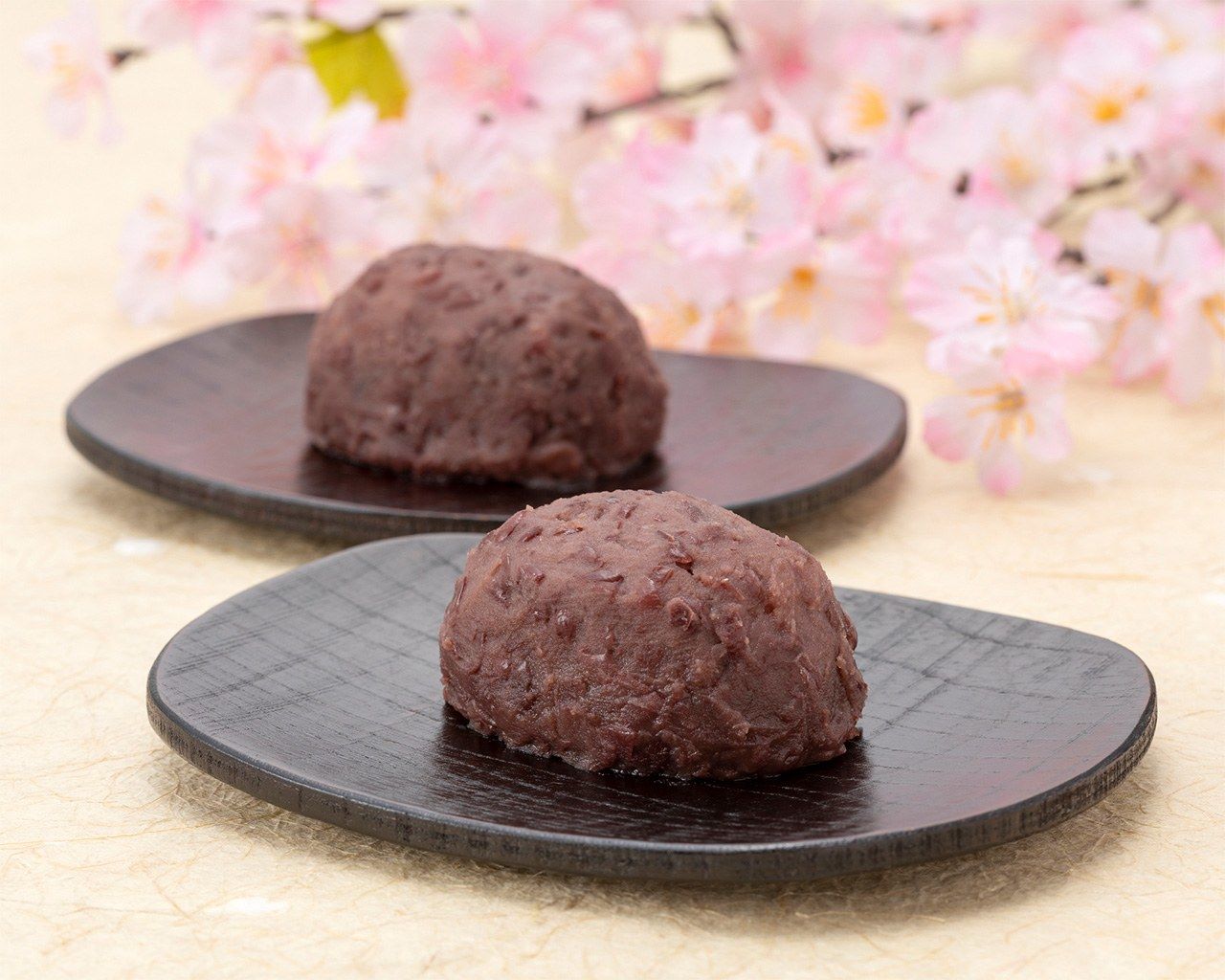
Rice cakes known as botamochi in spring and ohagi in autumn. (© Pixta)
Sakura (Cherry Blossoms)
At this time of year, there are daily updates about the blossoming of cherry trees. Hanami (literally “flower viewing”), originated in the Nara period (710–94) with plum blossoms, but cherry blossom viewing became more popular in the Heian period. The change in taste is seen in the Kokin wakashū poetry collection, dating from around 905, which has 18 poems about plum blossoms and 70 about cherry blossoms. The first recorded cherry blossom viewing party was hosted by Emperor Saga in 812. From 831, there were regular hanami events staged by the emperor each year.
Nowadays, the vast majority of cherry blossoms in Japan are the somei yoshino variety, first cultivated late in the Edo period (1603–1868). Prior to that, over 400 varieties were already known, such as the yamazakura mountain cherry. Because somei yoshino is a cloned variety, the flowers tend to bloom and fall at the same time in each region. In contrast, wild varieties such as the yamazakura differ genetically from tree to tree, so each blooms at its own timing.
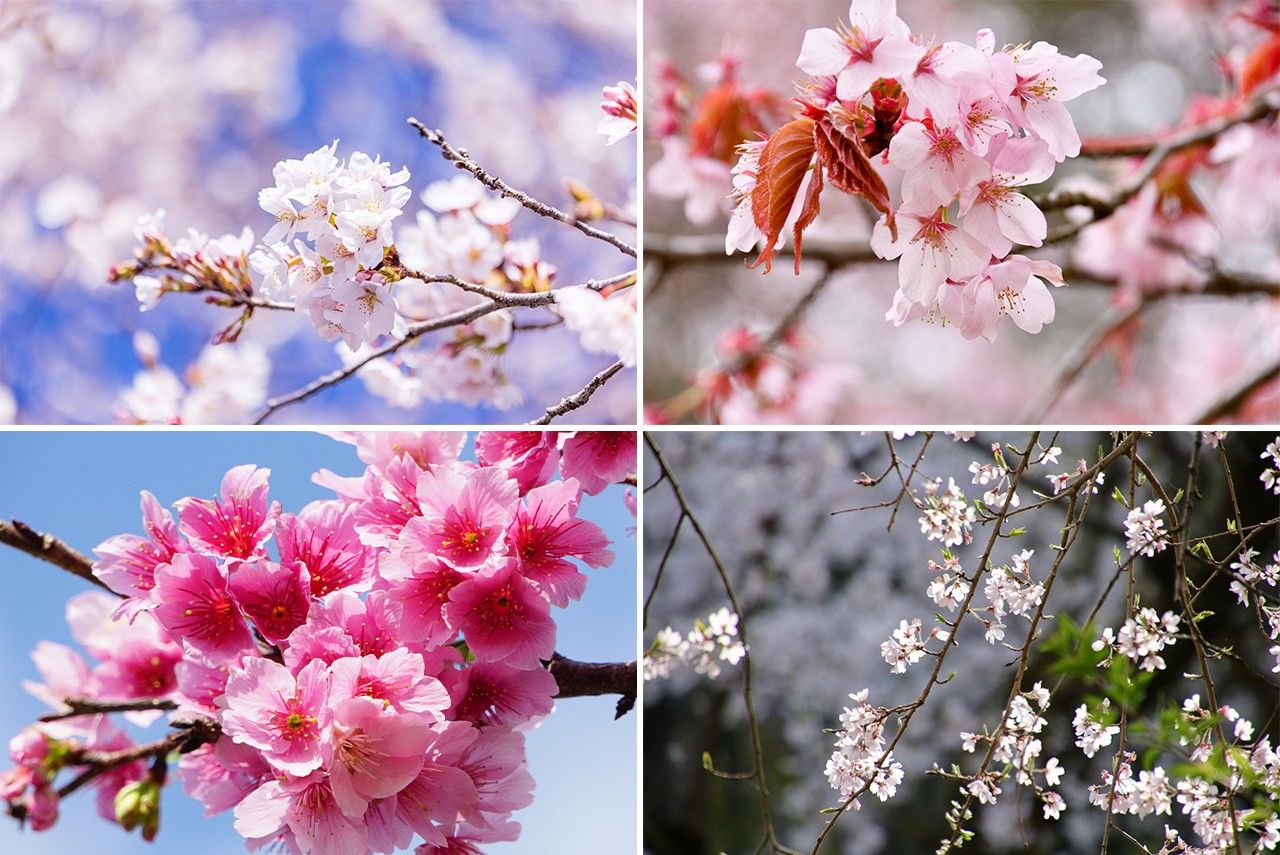
Cherry blossom varieties clockwise from upper left: somei yoshino, yamazakura, edohigan, and kanhizakura. (© Pixta)
Japan’s Most Famous Hanami Spot
Mount Yoshino in Nara Prefecture boasts around 30,000 predominately white yamazakura cherry blossom trees in four areas at different altitudes, resulting in staggered blooming seasons. Hanami parties on Yoshino date back to that held by the powerful samurai Toyotomi Hideyoshi in 1594. He invited some 5,000 guests to the five-day event, including Tokugawa Ieyasu and other military commanders, tea masters, and renga poets.
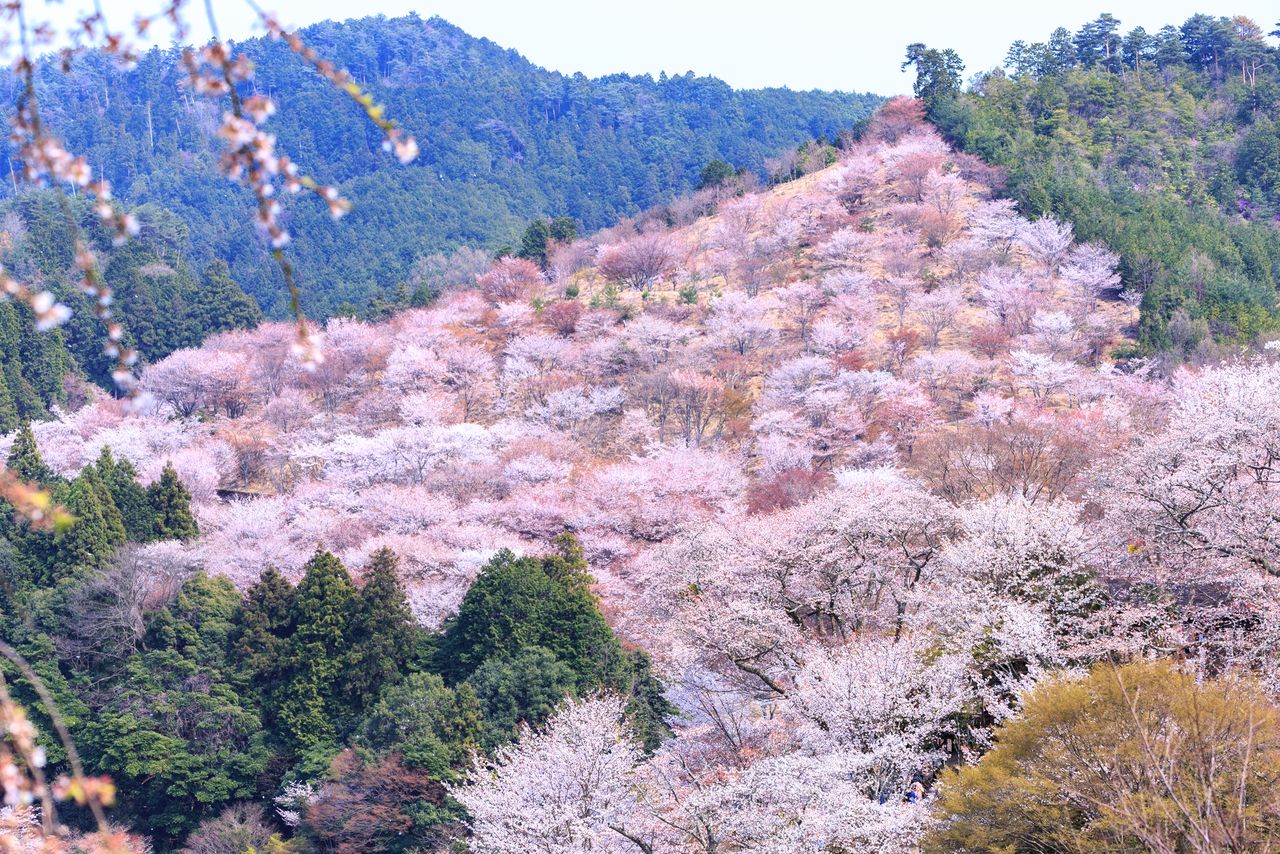
Mountain cherry blossoms at Nakasenbon, mid-way up Mount Yoshino, in Nara Prefecture. (© Pixta)
Start of the Year for Businesses and Schools
Japanese businesses and schools generally observe a year that runs from April 1 through to March 31. The system was introduced in the Meiji era (1868–1912).
In Spring, the Dawn (The Pillow Book)
Heian period author Sei Shōnagon (ca. 966–1025) begins her famous work Makura no sōshi (The Pillow Book) with a famous description of spring: Haru wa akebono—yōyō shiroku nariyuku yamagiwa. sukoshi akarite, murasakidachitaru, kumo no hosoku tanabikitaru (In spring, the dawn—when the slowly paling mountain rim is tinged with red, and wisps of faintly crimson-purple cloud float in the sky. (trans. by Meredith McKinney)).
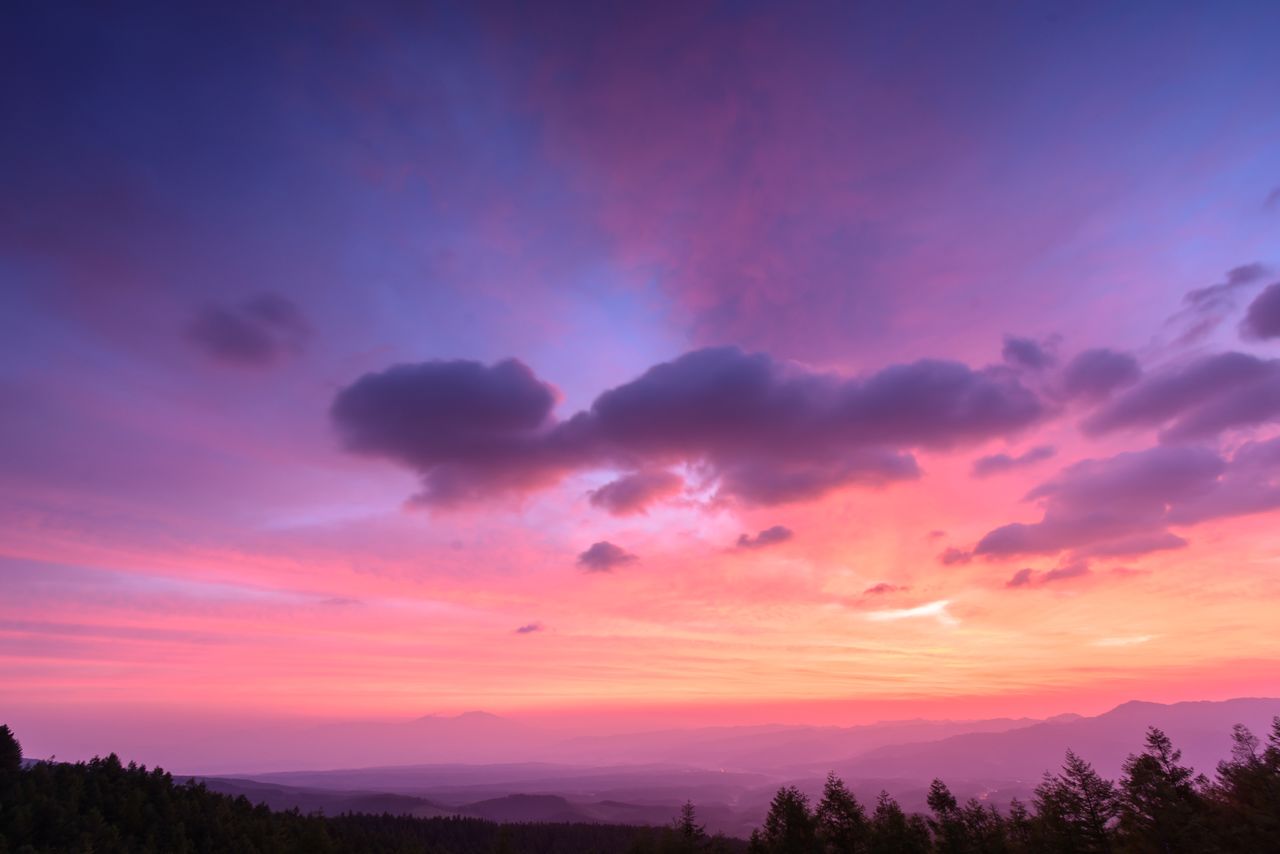
In spring, the dawn. (© Pixta)
Sparrows
At this time of year, sparrows build their nests under house eaves and roofs. Japanese people have felt an affinity with these birds since ancient times. They appear in folk tales such as “The Sparrow’s Lodge” and “The Tongue-Cut Sparrow” and the children’s song “The Sparrows’ School.”
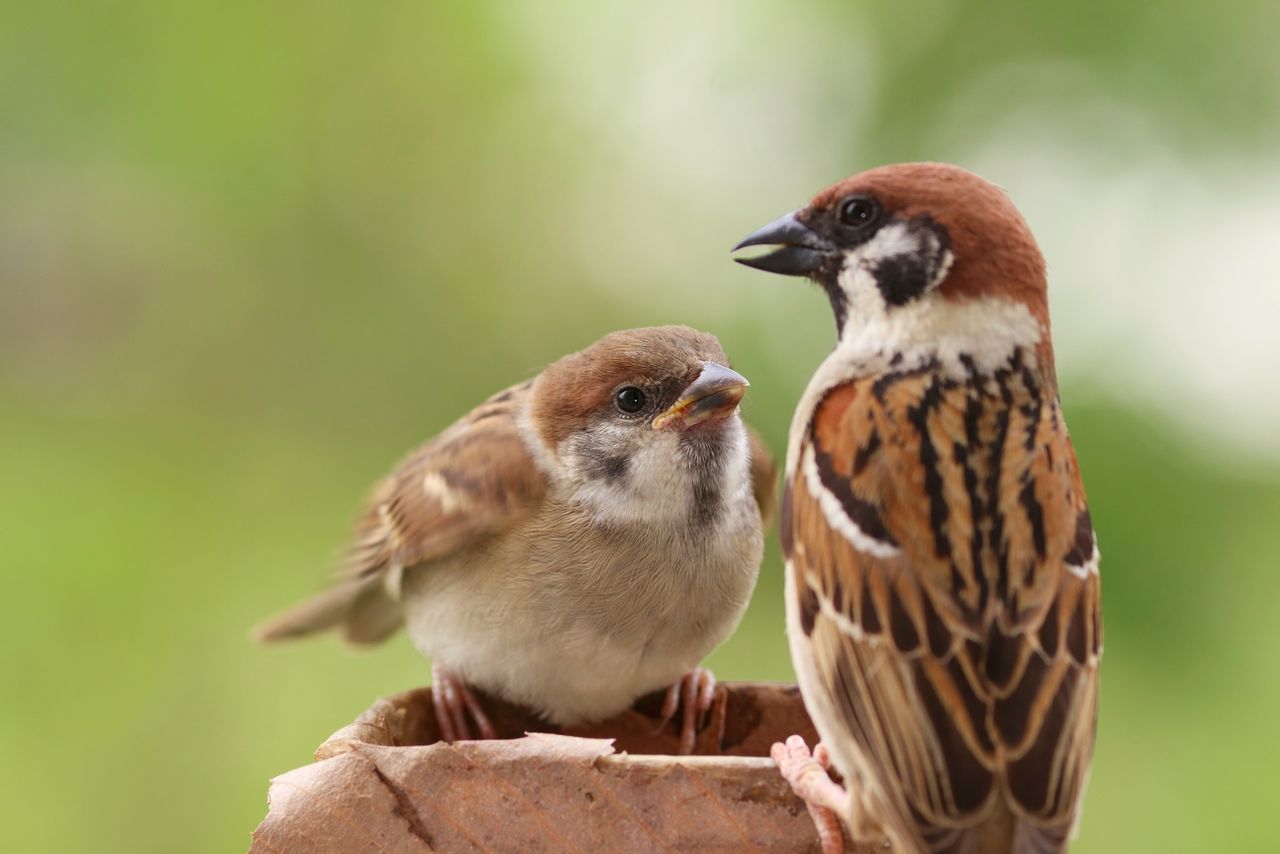
A mother sparrow and her chick. (© Pixta)
Kobushi and Mokuren Magnolias
Kobushi, a species of magnolia native to Japan, blooms in March and April. The English name, Kobus magnolia, is based on the Japanese. In Japan, they are also known as “tilling cherry blossoms,” because the appearance of the first flowers signals the time when farmers ought to till their fields and prepare for rice planting. Mokuren is the Japanese name for lily magnolia (Magnolia liliiflora), whose slightly larger white or purple flowers also bloom in early spring.

Kobushi (left) and purple mokuren or lily magnolia. (© Pixta)
Sakuramochi
Sakuramochi are Japanese sweets eaten in spring. They are said to have first been sold at a tea house outside the temple in Mukōjima, Tokyo, during the Edo period. In the Kantō region, they are made with red azuki bean paste, enclosed in a wheat flour wrapping. But in Kansai, the bean paste is stuffed inside of rice cakes made with dōmyōjiko rice flour. Both varieties are wrapped in salted sakura leaves, which impart a faint cherry blossom scent.

Sakuramochi, made in Kantō style (left) and Kansai style. (© Pixta)
Celebratory Sea Breams
Sea breams or tai are considered lucky in Japan due to the association with the word medetai or “auspicious.” The red madai variety that enters shallow protected sea waters at this time of year to lay its eggs is also called sakuradai. Whole bream is served at propitious occasions in spring, when they are in season. In autumn, they are referred to as momiji-dai, alluding to autumn leaves. When they grow to about 50 to 60 centimeters in length, they are ready to serve.
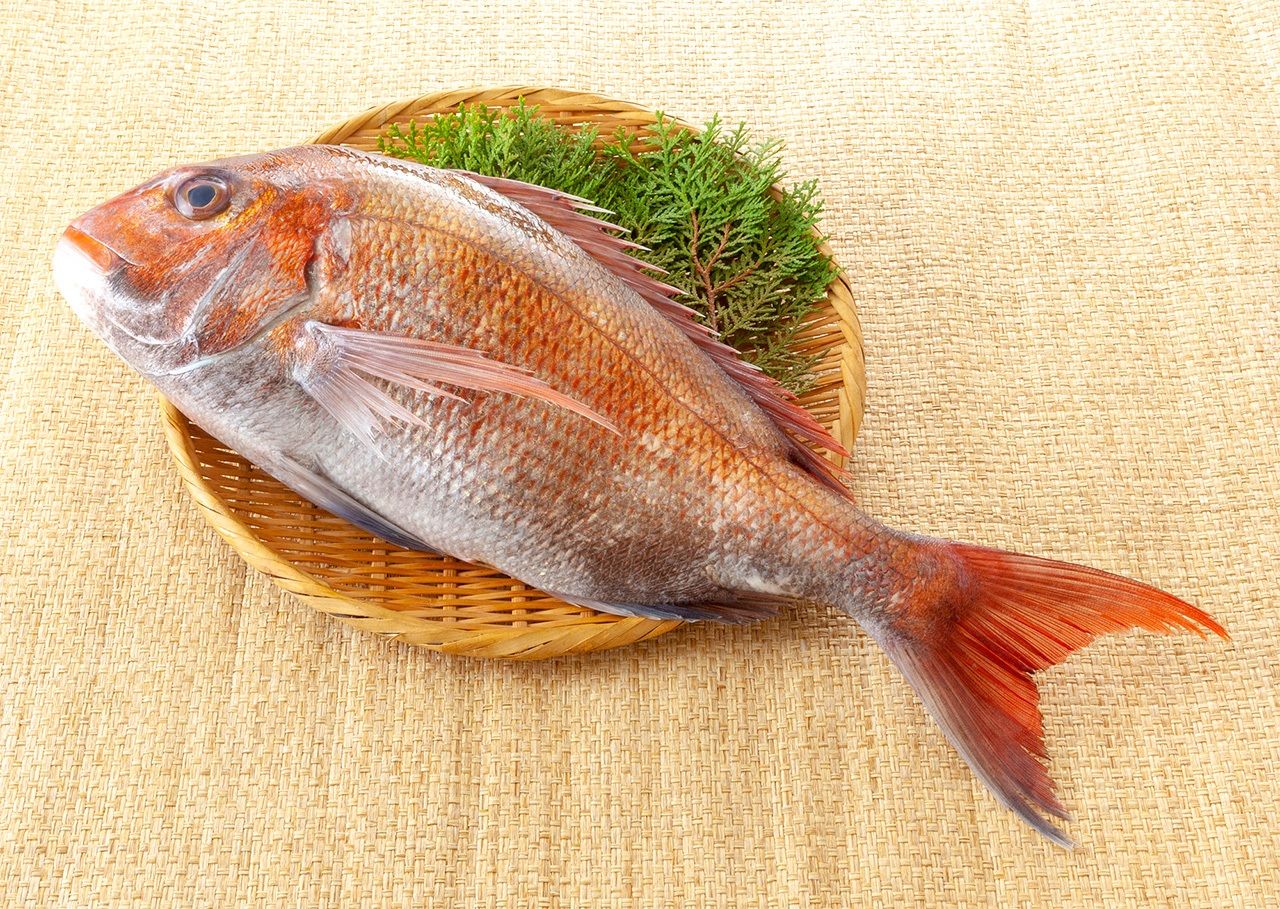
Madai red sea bream. (© Pixta)
(Supervised by Inoue Shōei, calendar researcher and author, Shintō minister, and guest lecturer at Tōhoku Fukushi University. Banner photo: Cherry blossoms with yellow nanohana rapeseed flowers show spring in full glory at Gongendō Sakura Embankment in Saitama Prefecture. © Pixta.)
cherry blossoms Mount Yoshino solar terms equinox higan The Pillow Book mochi